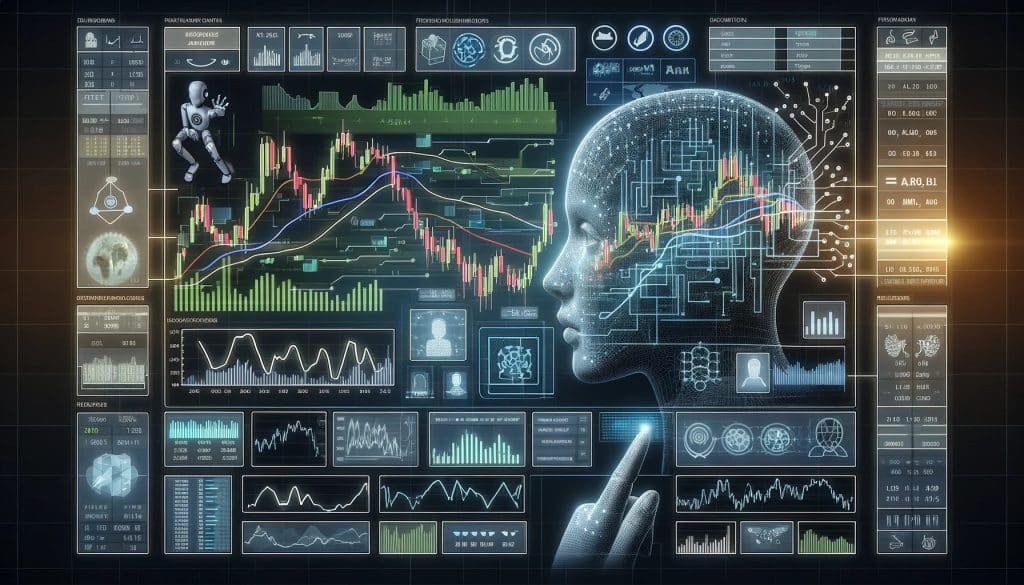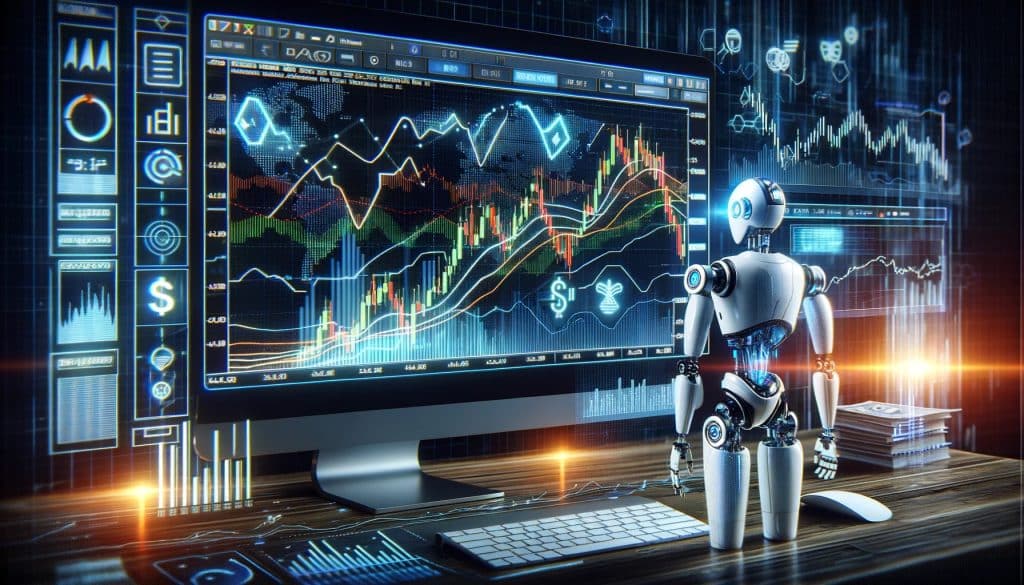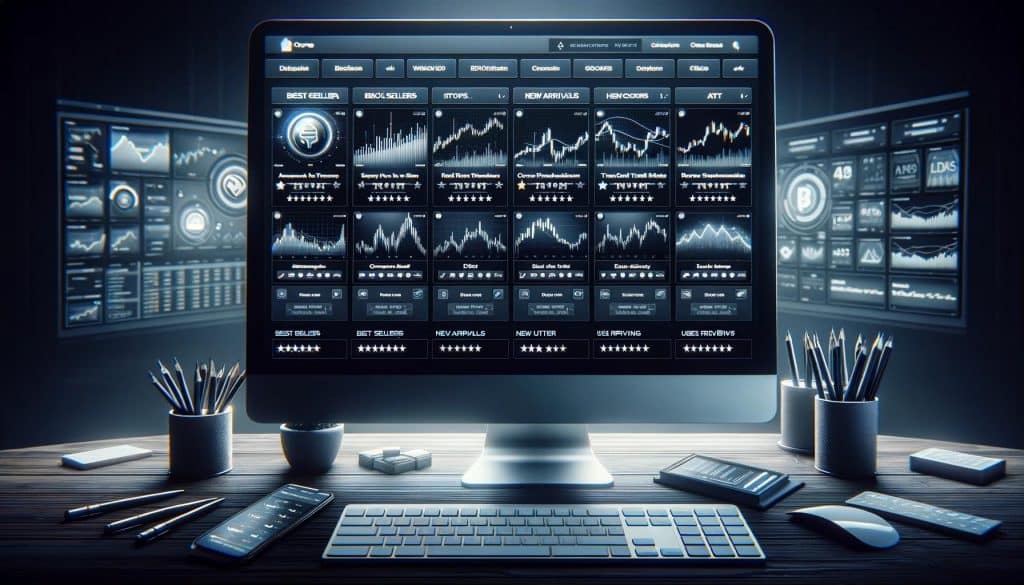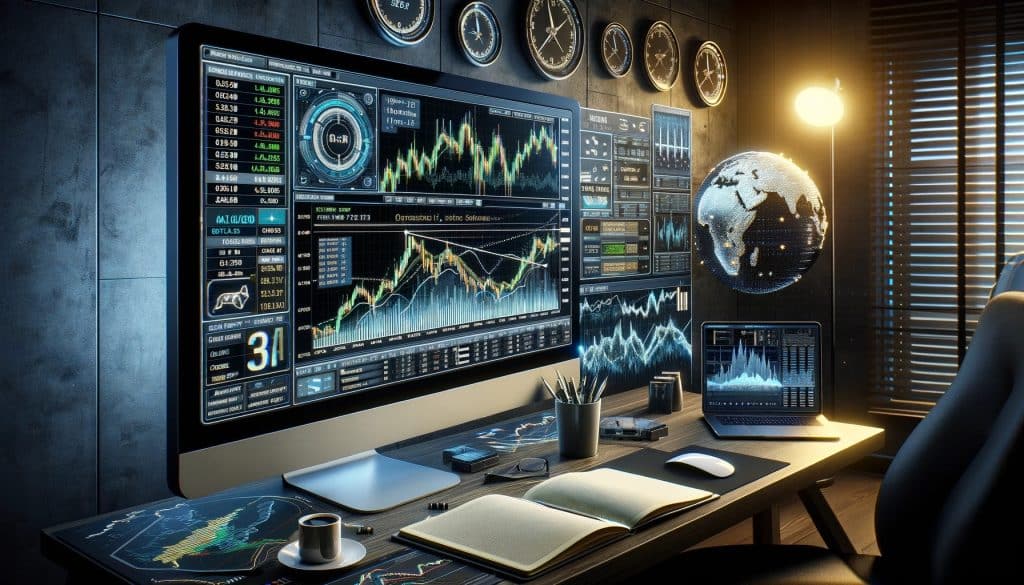The integration of algorithms into Forex trading has not only transformed the landscape of currency exchange but also democratized access to what was once a highly specialized field. In this detailed guide, we explore the nuances of selecting the most effective Forex trading algorithms, offering insights from a trader’s perspective to help you navigate this complex terrain.
Understanding Forex Trading Algorithms
What Are Forex Trading Algorithms?
Forex trading algorithms are complex mathematical models that automate trading decisions in the currency market. These algorithms analyze market data, interpret signals, and execute trades based on predefined criteria. They range from simple strategies based on moving averages to sophisticated systems employing artificial intelligence to predict market movements.
The Role of Algorithms in Modern Forex Trading
In today’s high-speed trading environment, algorithms play a crucial role in executing high-frequency trades at volumes and speeds unattainable by human traders. They’ve become indispensable in scalping strategies and in managing risks by instantly reacting to market changes, thereby leveling the playing field between institutional and individual traders.
Benefits of Using Forex Trading Robots
Enhanced Market Analysis
Forex trading robots can process and analyze data from multiple sources simultaneously, offering a more in-depth and nuanced analysis of market conditions. This capability allows traders to make informed decisions quickly, a critical advantage in the fast-paced Forex market.
Improved Trading Speed and Efficiency
The ability of algorithms to execute orders within milliseconds of detecting an opportunity ensures that traders can capitalize on price fluctuations that would be too fast for manual trading. This speed and efficiency can significantly increase the potential for profit, especially in strategies that rely on quick entry and exit points.
Emotionless Trading Decisions
Perhaps one of the most significant advantages of using algorithms is the elimination of emotional biases. Automated systems stick to the strategy regardless of fear, greed, or hope, ensuring that trades are executed based on logic and predefined rules, leading to more consistent outcomes.

Criteria for Choosing the Best Forex Trading Robots
Accuracy and Reliability
The cornerstone of a useful trading algorithm is its track record of accuracy and reliability. An algorithm should demonstrate consistent performance across various market conditions, showing resilience during high volatility and steadiness in trending markets.
Customization and Flexibility
An ideal trading algorithm offers customization options that allow traders to adjust parameters to align with their trading styles, risk tolerance, and specific goals. Flexibility to adapt to changing market dynamics is also crucial for long-term success.
Ease of Use and Integration
The best trading algorithms feature user-friendly interfaces and seamless integration with popular trading platforms. They should enhance the trading experience, not complicate it, allowing traders to focus on strategy rather than struggling with technical issues.
Support and Updates
Continuous support and regular updates from the algorithm developers are essential, especially in the rapidly evolving Forex market. Developers should provide timely updates to adapt to new market conditions and technological advancements.

Strategies for Optimizing Forex Trading Algorithms
Backtesting for Confidence
Backtesting is the process of testing a trading algorithm against historical market data to assess its viability. A thorough backtesting protocol helps identify strengths and weaknesses in the strategy, allowing for adjustments before risking real capital.
Continuous Monitoring and Adjustment
Even the most sophisticated trading algorithm requires oversight. Continuous monitoring ensures that the algorithm performs as expected, and adjustments are made in response to shifting market trends or unexpected events.
Combining Algorithms for Diversification
Using a combination of algorithms can spread risk and potentially increase profitability. Diversification across different strategies and currency pairs can mitigate losses if one approach underperforms, providing a more stable overall performance.
Evaluating the Risks of Forex Trading Algorithms
Over-Reliance on Automated Systems
While algorithms can significantly enhance trading, over-reliance on automation without understanding the underlying strategy can lead to complacency and potential losses. Traders should maintain an informed oversight of their automated strategies to mitigate this risk.
Understanding Algorithm Limitations
Algorithms are not infallible; they’re as good as the data and the strategy they’re based on. Recognizing the limitations and conditions under which an algorithm might falter is crucial for managing expectations and risk.

Future Trends in Forex Trading Algorithms
Advancements in AI and Machine Learning
The future of Forex trading algorithms lies in the advancement of AI and machine learning technologies, which promise to deliver even more sophisticated analysis and predictive capabilities. These technologies could enable algorithms to learn from market conditions, improving their decision-making processes over time.
Regulatory Considerations and Ethical Trading
As algorithms become more prevalent, regulatory bodies are taking a closer look at automated trading practices to ensure they promote fair and ethical trading. Future developments in Forex trading robots will likely include enhanced transparency and adherence to regulatory standards.
Conclusion: Navigating the World of Forex Trading Algorithms
Selecting the best Forex trading algorithms requires a blend of technical knowledge, strategic insight, and an understanding of one’s trading objectives. By considering the benefits, criteria for selection, and strategies for optimization discussed in this guide, traders can effectively leverage algorithms to enhance their trading performance. As the field of automated trading continues to evolve, staying informed and adaptable will be key to success.

FAQs about Forex Trading Algorithms
What are Forex trading robots?
Forex trading robots are computer programs designed to automate the process of trading currencies in the foreign exchange market. They operate based on a set of predefined rules or conditions, such as timing, price, or volume, to execute trades without human intervention.
How do Forex trading algorithms work?
Forex trading algorithms analyze market data using mathematical models and make trading decisions based on this analysis. They can execute trades automatically when certain market conditions or criteria are met, aiming to capitalize on market inefficiencies or trends.
Can beginners use Forex trading robots?
Yes, beginners can use Forex trading robots, especially those available through user-friendly platforms that offer predefined strategies. However, it’s important for beginners to have a basic understanding of the Forex market and the specific algorithm’s strategy before using it to trade.
Are Forex trading algorithms profitable?
The profitability of Forex trading algorithms depends on various factors, including the strategy’s soundness, market conditions, and the trader’s risk management practices. While some algorithms can be highly profitable, there is always a risk of loss in trading, and no algorithm guarantees consistent profits.
How do I choose the best Forex trading algorithm?
Choosing the best Forex trading algorithm involves evaluating several factors, such as the algorithm’s historical performance, risk management features, compatibility with your trading platform, and the level of customer support provided. It’s also important to test the algorithm through backtesting or a demo account before using it with real money.
Can Forex trading algorithms work in all market conditions?
No Forex trading algorithm can perform equally well in all market conditions. Algorithms typically have specific market environments where they perform best, such as trending or ranging markets. Diversifying strategies and continuously monitoring performance can help manage this limitation.
What risks are associated with using Forex trading algorithms?
Risks associated with using Forex trading algorithms include technical failures, over-reliance on automated decisions, and the possibility of unexpected market events that the algorithm may not handle well. Implementing sound risk management practices is essential to mitigate these risks.
Do I need to monitor my Forex trading algorithm constantly?
While Forex trading algorithms can automate trading decisions, periodic monitoring is recommended to ensure they are functioning as intended and to make adjustments based on changing market conditions or performance.
How can I test a Forex trading algorithm before going live?
Most platforms offer backtesting tools that allow you to test a Forex trading algorithm using historical data. Additionally, using a demo account to simulate live trading without risking real money can provide insight into the algorithm’s performance and help fine-tune its settings.
Are there free Forex trading algorithms available?
Yes, there are free Forex trading algorithms available, especially through platforms like MetaTrader, which offers access to a community of traders who share their Expert Advisors (EAs) for free or for a fee. However, it’s important to thoroughly evaluate any free algorithm for effectiveness and security risks.





